Quick Guide To Drying Screed HVAC Blog Rapid Energy
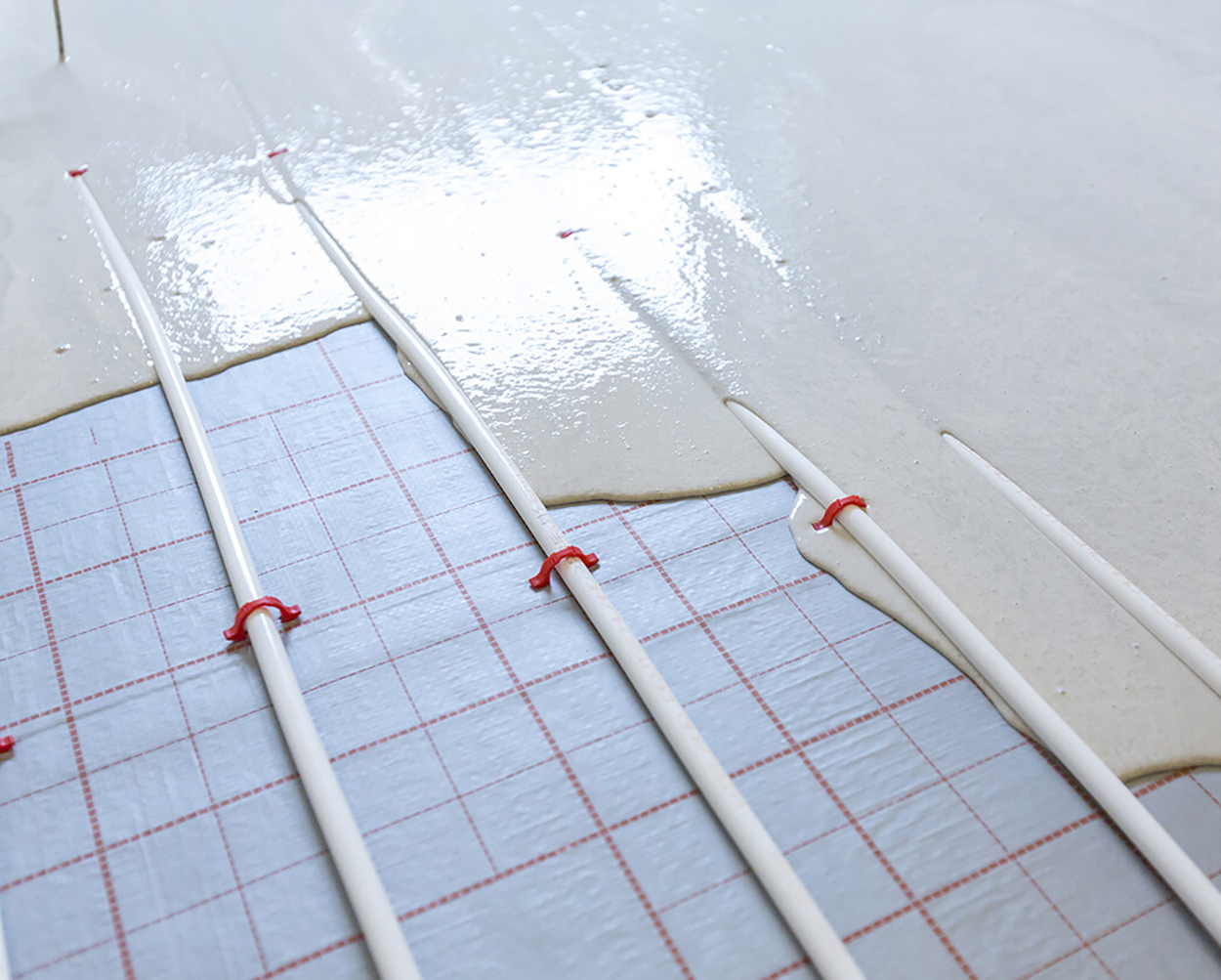
Electric underfloor heating is usually placed on top of a layer of floor insulation, to ensure the heat travels upwards rather than down. This is first laid on a layer of screed (made of sand and cement) or suspended timber (floorboards on joists), to ensure the surface is completely flat. The heating wires are then connected to your mains supply.
Underfloor Heating Guide Your FAQs Answered

Installation In Screed. Electric in screed underfloor heating consists of heating cables that fixed to the floor structure with a light steel mesh or fixing strips. The cables are embedded in a sand and cement bed that when heated, warming the floor covering. In screed heating is considered a direct acting system, although it does offer some.
Underfloor heating... Ditch the radiators. SDA Build London

This video shows you how to install the Comfort Heat Australia underfloor heating system in a bathroom. http://www.comfortheat.com.auFor more information ple.
Electric Under Floor Heating The Underfloor Heating Site

So, if your electric underfloor heating system is, as an example (and for easier maths), 200W per square metre, it will cost you 52p for every 5 metres of floor when you have the system on. However, you'll find that electric underfloor heating is only on for between 2-4 hours per day and more commonly found in bathrooms of averaging 2.5m2 in.
Cable Electric Underfloor Heating Partially Under Cement Screed Stock Image Image of heat

The Inscreed Cable electric underfloor heating system is ideal for installation in concrete screed thickness ranging from 50mm to 100mm. To ensure optimal heat-up times, it is recommended to use insulation boards if insulation is absent or if the concrete subfloor is more than 100mm thick. Instarmac's UltraFloor range offers excellent screeds.
Water Underfloor Heating Systems NuHeat
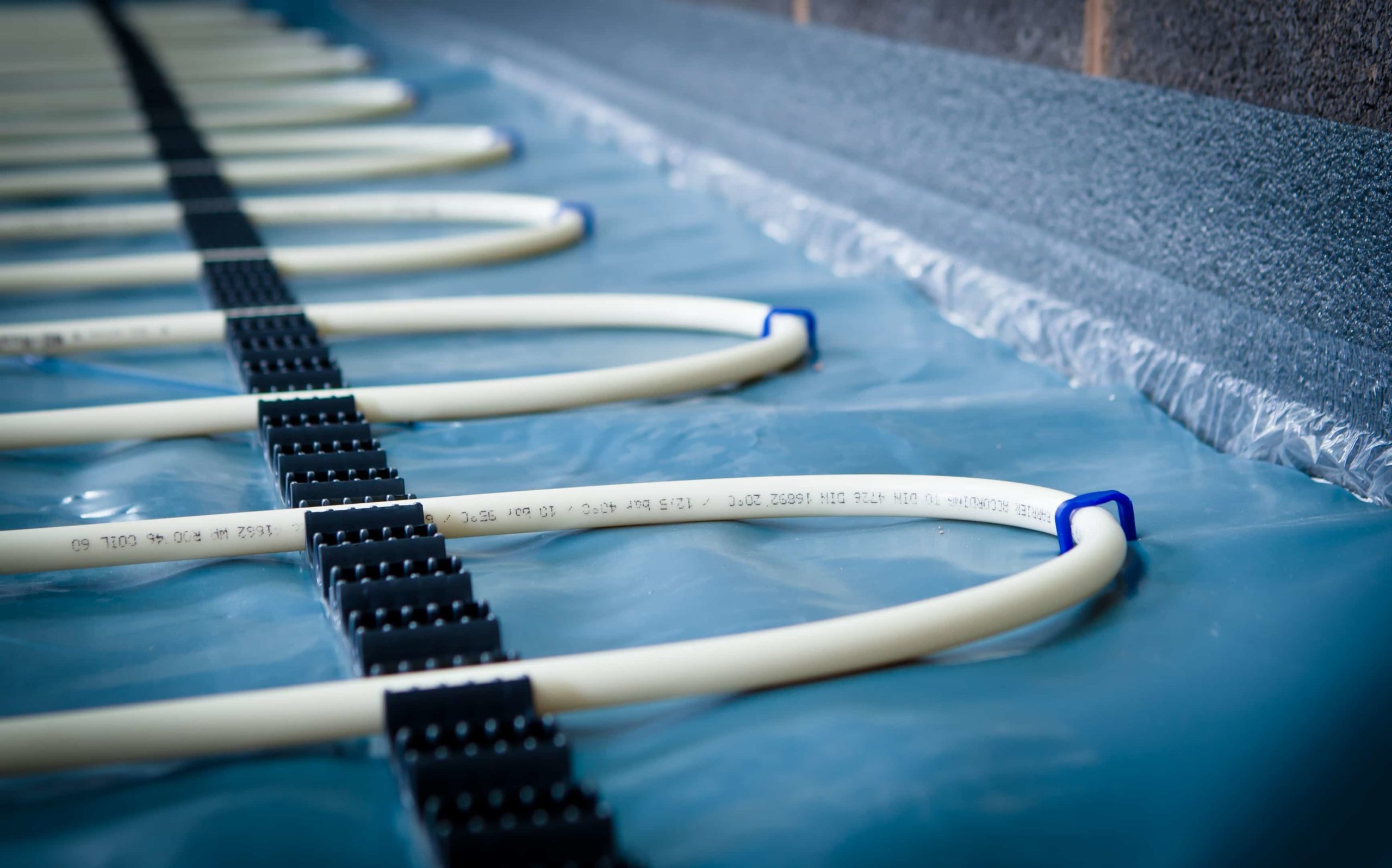
Electric underfloor heating has a shorter lifespan than water-based heating. It is also prone to corrosion and developing faults inside the in-screed wires, which would mean ripping up the screed to access them. A water-based system, on the other hand, usually only develops faults or leaks at the manifold located above the floor screed.
Inscreed electric floor heating system Sistem de incalzire pardoseala instalat in sapa

Removing the laitance by sanding to provide a key for the primer and/or adhesive. Commissioning the underfloor heating before tiling commenced. Allowing the UFH system to cool down for at least 48 hours before tiling commences. Moisture testing to confirm the dryness of the screed before tiling commenced.
Inscreed Heating Cable Heat Mat

Roger shows us how he installs radiant underfloor heating in a screed.This is the Worcester Bosch Greenfloor system but the ideas can be applied to other sys.
Installation of an Electric Underfloor Heating Under a Concrete Screed Closeup Stock Image

The In-Slab Cable electric underfloor heating system is designed for installation in concrete screed thickness of 2-6″. If insulation is absent or beneath more than 4″ of concrete subfloor, insulation boards must be used to ensure optimum heat-up times. The In-Slab Heater is suitable for almost any flooring finish and in particular where.
Underfloor Heating Screed Depths & Drying Times
The different types of electric underfloor heating systems. When researching electric underfloor heating, you'll more than likely come across four common systems. These are the traditional pre-spaced mesh mat, heating and decoupling, foil, and in-screed systems. You'll find that the names of these types of electric underfloor heating.
Can You Have Electric Underfloor Heating In A Bathroom Viewfloor.co

Electric underfloor heating cost. New-build install: £50 to £75 per square metre. Renovation property: £60 to £85 per square metre.. Warm-water systems involve burying 1.6cm pipes into the floor screed. The screed is then finished in your selected covering and the zoned system controlled by a manifold, usually located in a store cupboard
Retrofit Underfloor Heating The Ultimate Guide Homebuilding

Screed and underfloor heating systems should only be constructed if the temperature is above 5°C. Screed needs time to dry. Another common issue with screed and underfloor heating systems is that, if the screed isn't given enough time to dry, it can be easily damaged. Standard screed needs about 30 days to dry, while liquid screed takes.
6 Pros and Cons of Underfloor Heating You Didn't Know Warmup
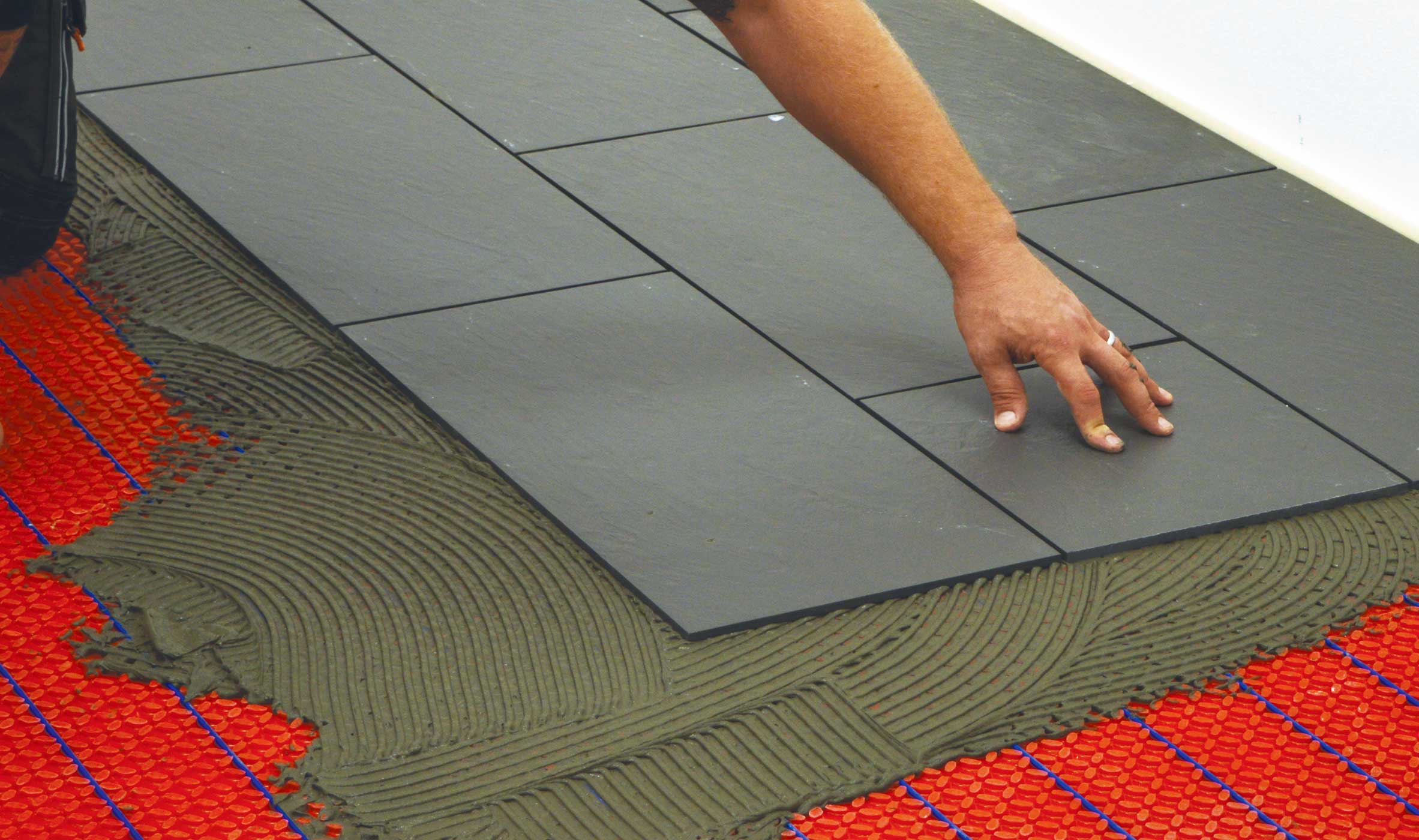
This traditional screed mix is made up from sand and cement at a 1:3-5 ratio and is then spread onto the floor and allowed to solidify around the UFH pipes or cables. Nowadays, most installers will use fibres to add strength and reinforcement to the flooring and will aim for a thickness around 75mm. This allows the best measure between heating.
Under Screed Heating Floor Heating Systems Speedheat Under Floor Heating
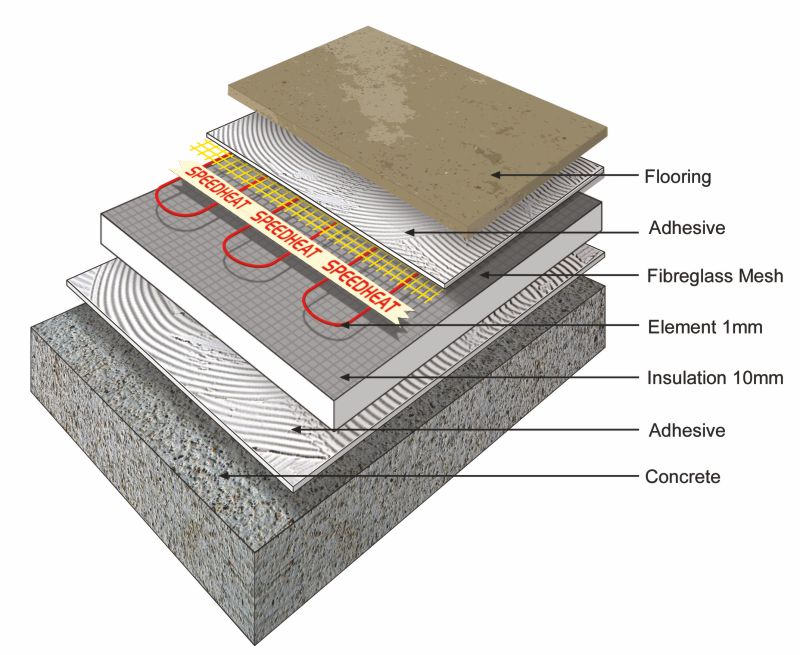
Underfloor Heating and Screed Depth. It is especially important to keep to the recommended thickness of a screed layer, as the depth of the pipe determines how effectively the UFH system will distribute its heat. The thickness of the layer also varies, depending on whether you are using traditional sand and cement screed or liquid screed.
Easy Standard Underfloor Heating Systems Easyflow Ltd
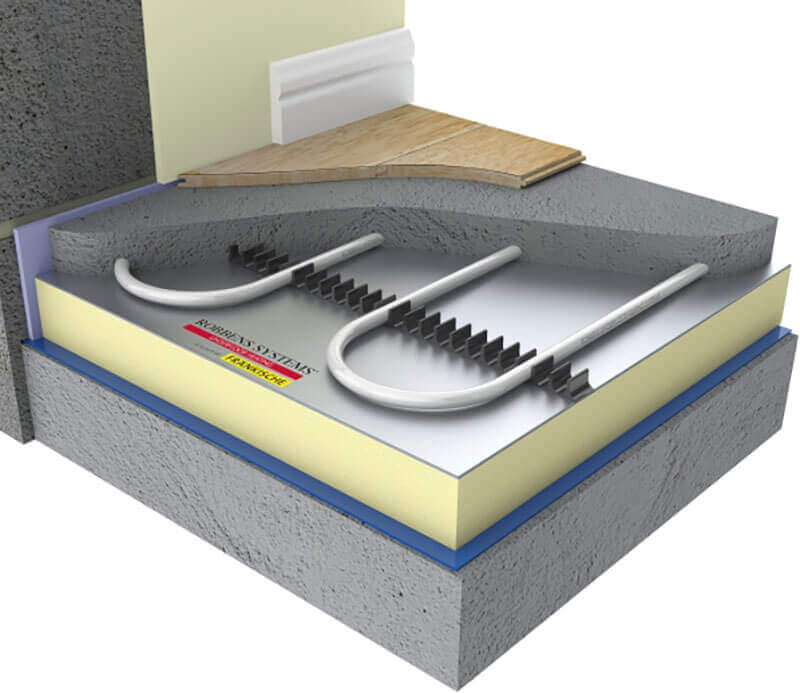
Inscreed electric underfloor heating is installed on the floor surface and underneath a sand cement screed of 20mm - 40mm that is laid on top of the floor heating. In-screed underfloor heating is commonly installed in wet area applications like bathrooms and laundries. However, our inscreed electric floor heating systems work under most floor.
In Screed Hydronic Heating Devex Underfloor Heating Systems
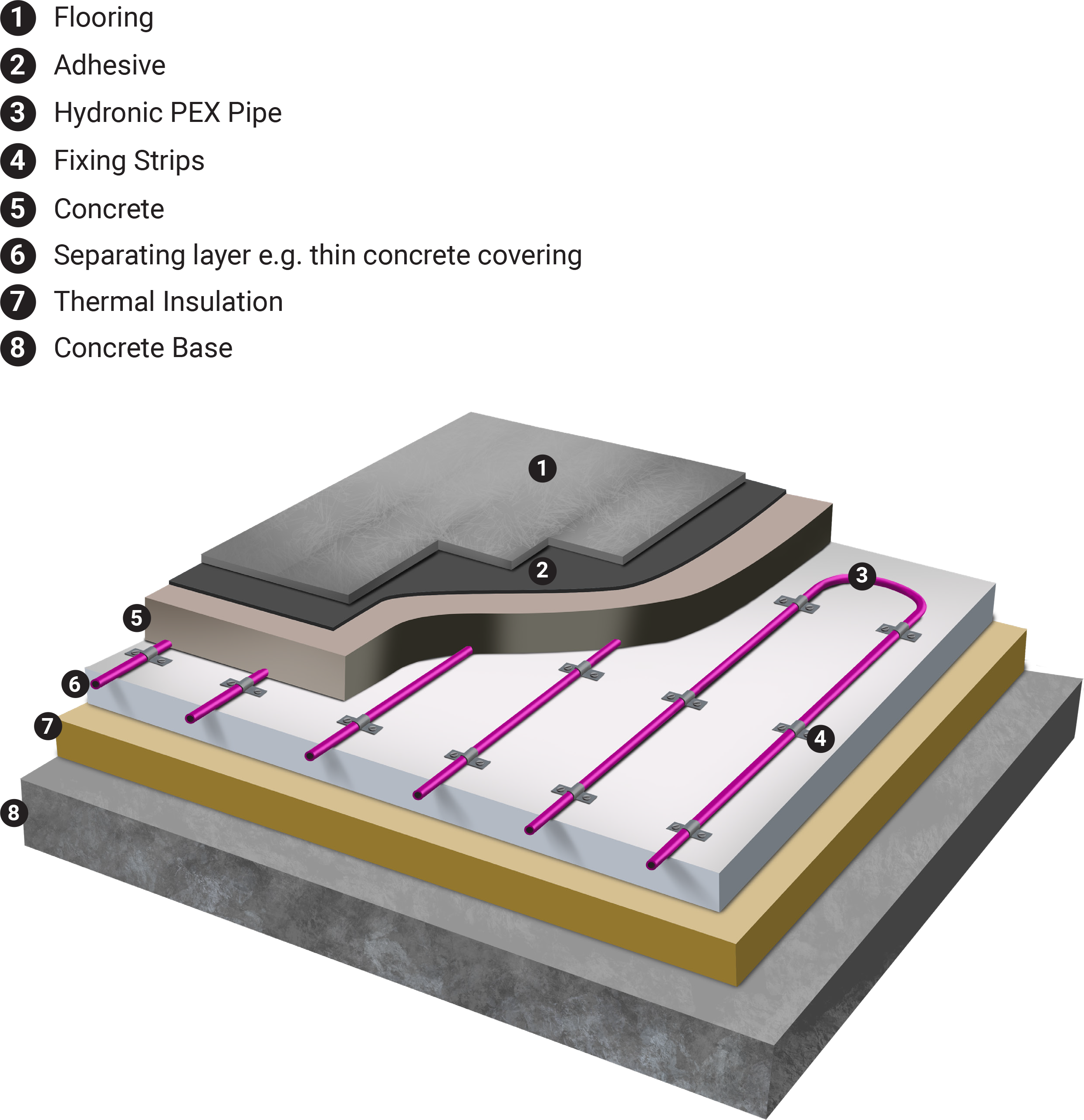
The Inscreed Cable electric underfloor heating system is designed for installation in concrete screed thickness of 50mm to 100mm. One of the best screeds to use for this process is from Instarmac's UltraFloor range. If insulation is absent or beneath more than 100mm of concrete subfloor, insulation boards must be used to ensure optimum heat.
.